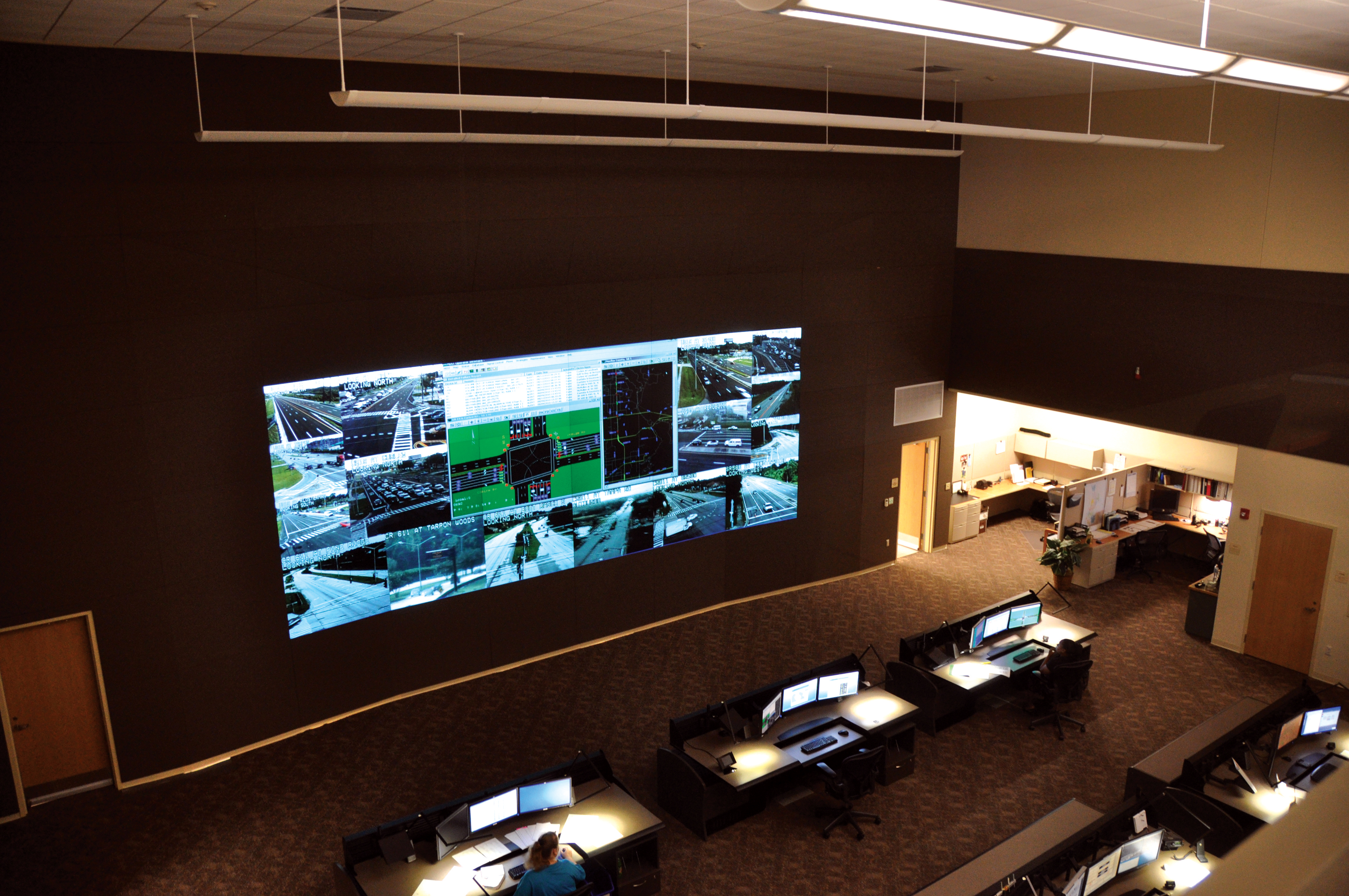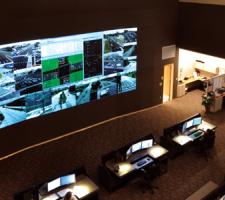
A number of US cities are adopting active traffic management or integrated corridor management approaches
The next generation of traffic management centres has arrived, writes
Typically, a TMC collected field data from the roadway and transit infrastructure and provided the integration necessary for operators to see what was happening and then coordinate a response. Standard operating procedures (SOPs) guided operators on how to respond to a given situation.
It eventually became impractical for TMC operators to refer to a SOP, which was often outdated or buried in a three-ring binder somewhere. As technology progressed, TMCs moved from facilitating responses – serving as an aggregator and integrator of data – to automating responses. Data files from years of incidents created a rich response history for network areas with frequent traffic incidents and congestion. The best responses were included in a standardised plan and pre-selected messages for the dynamic message sign application were saved and coordinated with traveller messaging systems.
With a prioritised system of incidents, a response plan for each and a limited set of tools, a TMC was able to automate many functions: The operator needed only to confirm the incident or event and then accept the response plan suggested by the system. In some cases, TMCs took over decision making completely and the operator only had to confirm that the incident was not a false alarm.
The future is optimised
The current landscape of traffic management continues to change, with increased traffic volumes and travellers’ use of multiple modes of transit. TMCs have had to evolve yet again to meet these new demands.Introduction of advanced transportation management systems (ATMS) has provided consistent, real-time information to operators, managers and travellers and represents one of the great leaps forward in our industry. With the additional support of tools such as traffic simulation models, multi-variate analytical models and decision-support systems combined with the availability of multi-modal data (real-time and historical), TMCs have moved from automation to optimisation of responses to both recurring and non-recurring situations.
For example, historically when an incident closed a lane of traffic, diversion to alternate routes was often the last alternative because of the lack of information about conditions on the other routes. Certainly, the TMC manager does not want to divert freeway traffic onto an arterial that is also congested. Furthermore, there was no way to determine if diversion was a better alternative to merely waiting for the original lane closure to clear.
But with real-time traffic data – even near-term predicted traffic demand – simulation models can be quickly calibrated to represent the most critical roadway networks and diversion route alternatives. When the TMC manager needs to make a decision – whether to divert traffic via Plan A, or implement Plan B, or do nothing – the manager has access to quantitative results upon which to base the decision.
This optimisation is now feasible due to the availability of real-time (and predictive) traffic data from multiple commercial sources on all major roadways in every urban area in the US. The example above and even more sophisticated optimisation technologies will continue to drive the evolution of TMCs. Specifically, two transportation management tools are critical to this optimised future. They represent a more aggressive, or active, form of traffic management.
Active traffic management (ATM) manages all lanes of a facility, including HOV/HOT or toll lanes. It also manages speed harmonisation and ramp metering, among other functions.
Integrated corridor management (ICM) is a decision-support management tool based on real-time traffic data and near-term traffic prediction of all transit modes, such as expressway lanes, arterial signal control and even parking management. This is a more comprehensive approach that optimises the throughput of a given corridor on all modes.
Of these two, ICM provides the most interesting and holistic approach to transportation management. The remainder of this article will focus on ICM and its impact on the future of TMCs.
Early adopters
In 2007, the USThe FHWA found that several European agencies employed management approaches such as speed harmonisation, temporary use of hard shoulders and dynamic signing and rerouting. Depending on the location and combination of strategies, specific benefits included an increase in average throughput for congested periods of 3-7%, an increase in overall capacity of 3-22%, a decrease in primary incidents of 3-30%, more uniform driver behaviour, an increase in trip reliability and the ability to delay the onset of freeway breakdown. The successes of the system were clear.
Based on this data, the FHWA’s recommendations for US networks included active management to optimise existing infrastructure during recurrent and non-recurrent congestion. Emphasis was placed on customer orientation and trip reliability, with integration of active management into infrastructure planning and programming.
Following release of these recommendations, several urban centres in the US have partnered with federal agencies to adopt an ATM or ICM approach for corridors in Seattle, Dallas, Minneapolis, Las Vegas and San Diego, among others.
According to the FHWA, preliminary results indicated that corridors that implement ICM experienced greater travel time reliability and productivity of corridor networks, as well as reduced fuel consumption and emissions. Because of this demonstrated success, some sites, such as Dallas, have moved into implementation and deployment stages of ICM.
Integrated Corridor Management in Dallas
Thanks to a grant by the US Department of Transportation, Dallas Area Rapid Transit (DART) is one of the latest agencies to implement ICM. The multi-modal approach was deployed along the US-75 Corridor in the cities of Dallas, Richardson and Plano, Texas. Its goal is a regional one, rather than site-specific: to improve all types of transportation through a corridor.The project includes a decision-support component that integrates into existing traffic equipment. A central data fusion engine collects and analyses information and provides integration of separate systems. It does this through Traffic Management Data Dictionary (TMDD) centre-to-centre standards that create a common information environment. DART configures this information platform, adding modular ATMS and advanced traveler information system (ATIS) tools to act on the information provided. It collects data from traffic, transit, construction, incidents, special events, parking and weather data providers. The data is accessible by every transportation and public safety agency within the corridor to share travel information, weather data and traffic conditions.
The technology provides a simulation capability and a multi-variate analysis component, taking into account future events such as approaching weather systems or upcoming sporting events. To determine the best decisions for traffic management, operators can layer their screens to include real-time data feeds from fixed sensors, GPS and cellular probe vehicles; transportation metrics such as speed, occupancy and volume; combine with data fusion systems predicting travel conditions two hours out, enabling alternative route suggestions to avoid congestion and delays.
As a result, DART has access to accurate, real-time information, resulting in more efficient responses and improved travel time.
Travellers can shift transportation modes before or during their journeys in response to changing traffic conditions. DART even provides a public-facing environment for patrons to visualise current and anticipated travel situations and receive traffic and transit alerts.
Barriers to widespread adoption
While the success of ATM and ICM strategies is evident, their greater adoption has not been rapid for two primary reasons.Firstly, ATM requires local and regional agencies to invest in additional infrastructure. Secondly, although these advanced approaches have been proven in Europe and preliminary studies in the US show positive results, there have not been widespread studies and data on the benefits for US municipalities. For urban areas wavering on whether to adopt, costs and insufficient study data are common inhibitors.
Next steps
The ever-increasing availability of quantitative information defining transit and traffic conditions and the advanced platforms to manage this data are expected to support decision making well beyond what was previously possible.The TMC becomes the monitoring centre of extensively integrated and highly optimised transport systems – making transportation one of the most efficient aspects of the modern city.
Traffic engineering is expected to play a stronger role in traffic management centres overall. Traditionally, traffic engineers have not been deeply involved because they simply did not have the tools:
they didn’t have a simulation model that could run fast enough, or a decision-support system that could take enough variables into account. Now that they have these technologies, engineers can evaluate the situation and optimise the network in real time. Going forward, the ability for a traffic engineer to effect real-time or proactive changes that optimise the network will be a key contribution to society.
Many transportation and metropolitan planning organisations are actively looking to improve management of their transportation networks, to reduce congestion, increase traffic flow and generally optimise the safe throughput of travellers. Building more roads, however, is usually not the answer. Instead, the emphasis must be on the delivery of new, better and more innovative ITS solutions that will extend the life of existing transportation assets, providing the means to monitor and actively manage entire networks.













